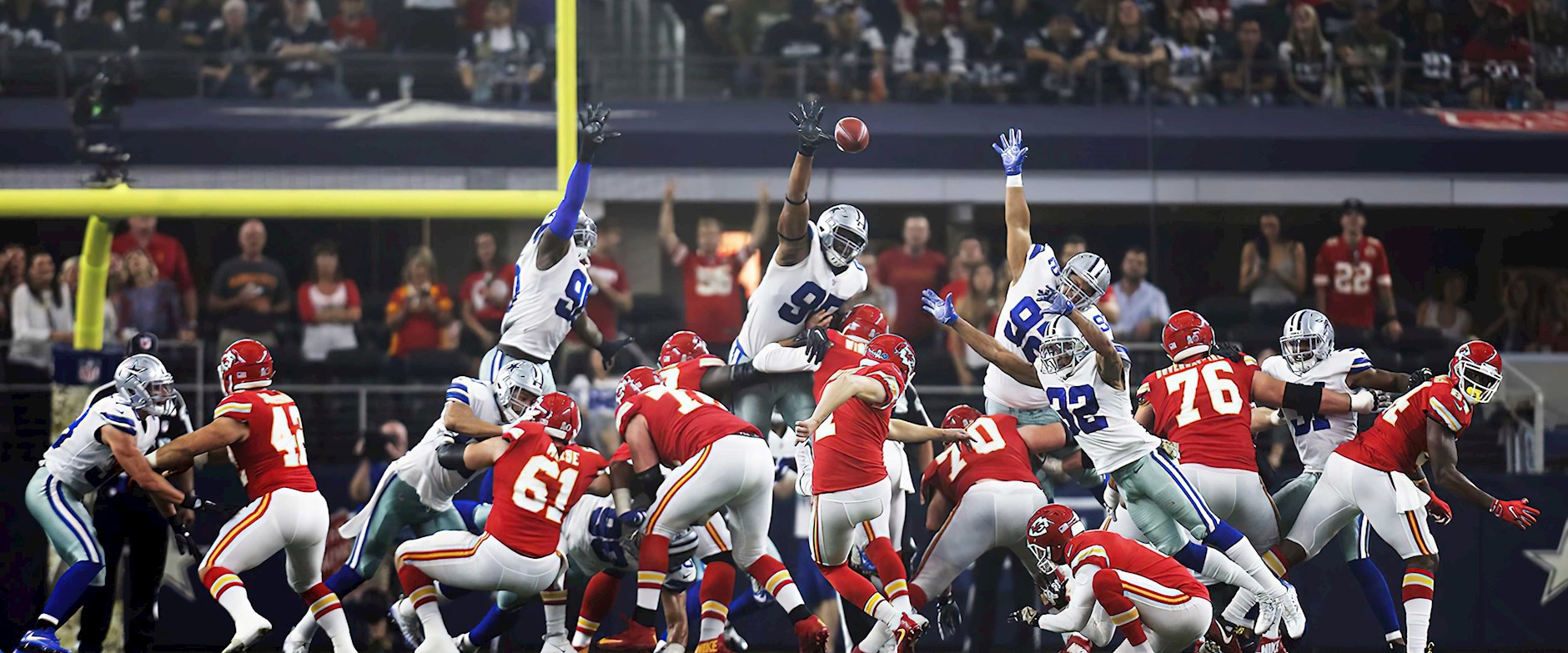
48.2%
overall NFL success rate for two-point conversions, 2000–2014
48.2%
Associated Press
In a 2016 National Football League playoff game, with time running out, the Green Bay Packers scored a touchdown to bring them within one point of the Arizona Cardinals. They had the option of either kicking an extra point and pushing the game into overtime, or trying for a two-point conversion to potentially win the game outright. The Packers kicked the extra point and then lost the game in overtime.
They made the common choice, research suggests. When facing a risk of immediate failure, people often avoid it, even if it improves the odds of success, according to Chicago Booth’s Jane L. Risen and Richard H. Thaler, Cornell University’s Thomas Gilovich, and Cornell PhD candidate Jesse Walker.
“When decision makers face a choice between a ‘fast’ option that offers a greater chance of ultimate victory but also a non-trivial chance of immediate defeat, and a ‘slow’ option with both a lower chance of winning and a lesser chance of immediate defeat, they often opt for the slow option because of their aversion to sudden death,” the researchers write. “In so doing, they lower their chances of ultimate success.”
To study this, the researchers analyzed 10 years of football data and found 47 games in which a team that had been behind scored a touchdown with time expiring, putting it within two points of winning the game. Eighty-nine percent of teams chose to kick the extra point, in hopes of tying the game, rather than attempt the two-point play to potentially win.

overall NFL success rate for two-point conversions, 2000–2014
48.2%
of teams that go for the tie with three minutes or less to play ultimately win
40.5%
of teams go for the tie instead of the win with three minutes or less to play
89.4%This tendency, which the researchers call sudden-death aversion, can be seen in professional-basketball data as well. Teams with a two-point disadvantage near the end of a game opted to go for a two-point shot for the tie 71 percent of the time, rather than the tougher three-point shot for the win.
And the researchers saw the pattern again in a lab experiment involving a card game in which they asked study participants to choose between a slower, seemingly safer strategy and one that offered better odds but risked immediate loss. Once again, participants favored the first choice.
The researchers examine two reasons for this behavior. First, people display myopic loss aversion. Rather than consider the full set of consequences for a decision, people narrowly focus on the possibility of immediate defeat. Second, even when people consider the broad frame, they can distort the perceived likelihood of failure because taking a risk that ‘need not be taken’ feels especially risky. Indeed, people believe immediate defeat is more likely when other ‘safer’ strategies are available than when it is a strategy that has to be pursued. And there are probably other phenomena at play too—as people may also fear feeling regret, or being blamed by those around them for failing on the riskier play.
While the researchers study this tendency primarily in sports data, the same behavior pattern can turn up elsewhere. “We suggest that whether you are a professional coach, a mid-level manager, or a player, politician, or patient, an aversion to sudden death can lead you to feel that a strategy with better odds is riskier, and thus give rise to suboptimal decision-making across a host of important contexts,” the researchers write. “Although the dictum that wise decision makers should ‘live to fight another day’ has merit in a great many circumstances, we have identified an important class of situations in which following this dictum undermines the decision maker’s best interests.”
Jesse Walker, Jane L. Risen, Thomas Gilovich, and Richard H. Thaler, “Sudden-Death Aversion: Avoiding Superior Options Because They Feel Riskier,” Journal of Personality and Social Psychology, January 2018.

Human religious leaders benefit from their perceived authenticity.
Spiritual Guidance Is Hard to Automate
The information we gather from our first impressions is often wrong.
Why Reading Faces Is a Dangerous Game
The debate has raged for 300 years and counting.
What Is the Line Between Self-Interest and Selfishness?Your Privacy
We want to demonstrate our commitment to your privacy. Please review Chicago Booth's privacy notice, which provides information explaining how and why we collect particular information when you visit our website.